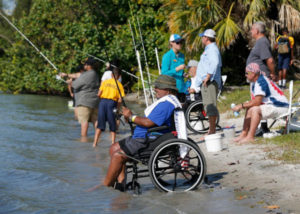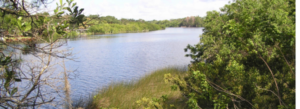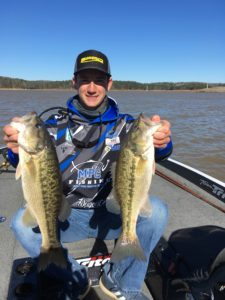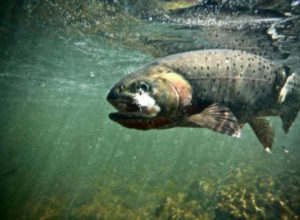Veterans Find Healing and Hope on Public Lands
from The Fishing Wire
A visit to America’s public lands is more than an opportunity to see an epic vista, learn about history and experience wildlife. It’s also good medicine.
Connecting with the outdoors can heal the mind, body and soul. For veterans, time in the outdoors can help them recover from traumatic combat injuries and find relief from pain. All across the country, Interior is partnering with groups to make it easier for disabled veterans and others to discover the therapeutic qualities of America’s national parks, wildlife refuges and other public lands.
Check out some of the inspiring partnerships and locations that are helping veterans find healing on America’s public lands.
Casting a line for a day of fun and fishing
Fishing is often the line that connects people to their public lands. Florida’s Jupiter Inlet Lighthouse Outstanding Natural Area is using this favored pastime to unite veterans and their families for a day of fun, friendship and fishing. This year, Jupiter Inlet Lighthouse hosted the 4th annual Veterans Fishing Classic as part of the Fisheries for Veterans Project — an effort to connect veterans to the therapeutic qualities of outdoor recreation, while promoting stewardship of public lands. The day was filled with fishing and tales of missed catches as 140 veterans and their families attempted to reel in a big one.

Veterans fishing public waters
Veterans and their families enjoy the lapping waves, coastal breeze and thrill of fishing as part of the Veterans Family Fishing Classic at Jupiter Inlet Lighthouse Outstanding Natural Area. Photo courtesy of Kathy Williams,
FishingCommuities.org.
Preserving history and finding relief at Lake Mead
Deep underwater at Lake Mohave lies a historic aerial ferry that used to serve the lake in the 1930s. This unexpected spot at Lake Mead National Recreation Area is helping disabled veterans find comfort from painful combat injuries. Working with WAVES Project (short for the Wounded American Veterans Experience SCUBA), the park took six wounded veterans on dives to inspect and preserve the underwater artifacts in Lake Mohave. But there was also a benefit for veterans — they experienced relief from pain. Not only has scuba diving helped veterans with physical disabilities, it’s also helped those suffering from post-traumatic stress disorder and traumatic brain injuries. Learn more about how Lake Mead is working to give wounded veterans a fresh start through diving experiences.
Experiencing the peace of wild Alaska
For seven years, disabled veterans have trekked to Alaska’s Delta River for world-class fly-fishing and to find peace in this remote location. The Delta River rises from a chain of 21 lakes surrounded by picturesque mountains and is known for its amazing Arctic grayling fishery. Since 2011, the Bureau of Land Management has hosted Project Healing Waters events here to raise awareness of the restorative values of public lands, and most importantly, to give back to those who have given so much to our country. As part of these fly-fishing events, veterans will routinely catch and release 25-100 Arctic grayling in a day, and at night they’ll share stories around the campfire — strengthening camaraderie, building relationships and connecting with their local community. The Delta River event is just one of many Healing Waters outings on America’s public lands. There are also float fishing trips on the Bighorn and Beaverhead rivers in Montana, both of which are ribbon trout fisheries below Bureaus of Reclamation reservoirs.
A participant of a Project Healing Waters event last year hooks an Arctic Grayling along Alaska’s Delta River. Photo by Matt Vos, Bureau of Land Management.
Giving hope by improving access to public lands
Whether it’s with a camera in hand or a shotgun, there’s something thrilling about sitting in a blind waiting for a flock of mallards to take off or listening to the wind whistle through the trees. But for wounded veterans or others with disabilities, the chance to hunt, fish and hike isn’t always a given. To change that, wildlife refuges in Washington have partnered with disabled veteran Rick Spring to build accessible blinds so that all visitors can experience the Pacific Northwest’s outdoors. Rick, who volunteers his time to improving accessibility on public lands, has built three custom blinds for two wildlife refuges — each one large enough to accommodate two wheelchairs. Rick hopes to expand the use of his custom-designed blinds to Oregon and then to the national level so more people with disabilities can have access to the outdoors. It’s Rick’s way of giving hope to injured veterans.
Discovering the restorative powers of the outdoors
The Upper Colorado River spans a unique and beautiful landscape, known for its diverse water features, gold medal trout waters, abundant wildlife and cultural landscapes along the Colorado River Headwaters Scenic Byway. It’s also an ideal place for therapeutic outdoor adventures. A number of organizations and outfitters host whitewater and fly fishing trips on the Upper Colorado River for wounded warriors. These experiences on public lands not only let veterans tap into the restorative powers of nature but also helps them build long-term support networks and connections.
Bonding with horses to improve health and well being
People often form strong bonds with animals. With a saddle and some trust, people and horses work together in a powerful partnership with surprising results. Equine therapy is a proven method to help patients recover from both physical and mental injuries, and improve their confidence, awareness and patience. At Rock Creek Park Horse Center in the heart of Washington, D.C., the Ridewell Program provides active duty military personnel and veterans suffering from traumatic brain injuries and PTSD a chance to come to ride and learn about horses with the help of officers from the U.S. Park Police Horse Mounted Unit. Thanks to the teamwork, natural setting and the time spent with horses, doctors and families have noted improvements in their balance and mental wellbeing, as well as pride and joy in the wounded warriors’ accomplishments. These events are able to happen with funding provided through Rock Creek Riders, an all volunteer non profit organization that provides local children, active duty military and veterans the opportunity to heal through the power of riding.
Healing while hunting
Even though physical injuries can change veterans’ lives forever, they can always find adventure and rejuvenation at National Wildlife Refuge System lands across America. At the Upper Mississippi River National Wildlife and Fish Refuge, the annual deer hunt for disabled sportsmen is making sure all Americans have access to excellent hunting opportunities, regardless of their physical limitations. Since the refuge started the hunt in 2007 at the Lost Mound Unit of the refuge, more than 1,000 hunters from all over the country have participated. Much of the program’s success depends on partnerships to provide travel for hunters. As part of the program, the refuge also partners with a deer tracking service to make sure the hunters can locate the deer they shot. In addition to providing hunters with mobility limitations the chance to experience a high-quality deer hunt, the event also opens the door to all sorts of recreational opportunities that national wildlife refuges have to offer — from hunting and fishing to birding and hiking.
Calm waters bring peace
Known best for dams and reservoirs, the Bureau of Reclamation also plays a major role in meeting increasing public demand for water-based outdoor recreation facilities and opportunities. Using these resources, Reclamation has several programs with federal, state and local partners that support recovery and rehabilitation for disabled veterans. The Purple Heart Anglers have used Reclamation’s Lake Berryessa and New Melones Lake for several fishing events in California. At a recent event, disabled veterans were bussed to Lake Berryessa and paired with boat owners for a day of fishing. Reclamation concessionaires provided lunch, music and prizes. It’s a great way to say thanks to those who have sacrificed so much for our country.



